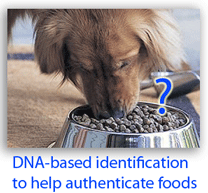Everyday DNA
 GPS devices for civilian use were first introduced 1982. The TI 4100 from Texas Instrument Company cost $150,000, weighed 50 lbs, and had heavy demand from land surveyors (GPS World, December 2004). Thanks to steady improvements in cost, size, and power demand, GPS technology is now a standard feature in cellular phones, meeting such daily needs as finding the nearest coffeeshop. The simplicity of everyday use is undergirded by an enormous investment in technology. In a 1997 report, RAND corporation estimated approximately $8 billion had been spent to develop, launch, and maintain the 24-satellite system that provides GPS signals, and the ongoing costs were $300 million/y.
GPS devices for civilian use were first introduced 1982. The TI 4100 from Texas Instrument Company cost $150,000, weighed 50 lbs, and had heavy demand from land surveyors (GPS World, December 2004). Thanks to steady improvements in cost, size, and power demand, GPS technology is now a standard feature in cellular phones, meeting such daily needs as finding the nearest coffeeshop. The simplicity of everyday use is undergirded by an enormous investment in technology. In a 1997 report, RAND corporation estimated approximately $8 billion had been spent to develop, launch, and maintain the 24-satellite system that provides GPS signals, and the ongoing costs were $300 million/y.
 The GPS history suggests viewing the current drive to establish a DNA reference library for millions of plant and animal species as infrastructure investment, analogous to the GPS satellite system. It is relatively expensive but once established will enable diverse new applications for society and science. What uses will improvements in DNA sequencing married to a robust DNA barcode library bring?
The GPS history suggests viewing the current drive to establish a DNA reference library for millions of plant and animal species as infrastructure investment, analogous to the GPS satellite system. It is relatively expensive but once established will enable diverse new applications for society and science. What uses will improvements in DNA sequencing married to a robust DNA barcode library bring?
Food authentication is likely to be one major application, including a wide array of products such as fish, olive oil, and packaged mixtures such as soups and pet food.
This entry was posted on Tuesday, November 25th, 2008 at 11:54 pm and is filed under General. You can follow any responses to this entry through the RSS 2.0 feed. Both comments and pings are currently closed.
November 26th, 2008 at 11:04 am
Not only food authentication but identification of plant and animal smuggling.
December 4th, 2008 at 10:05 am
[…] But Mark Stoeckle at The Barcode of Life likens it to the $8 billion effort to make GPS a reality. Like GPS, DNA barcoding will also become a part of everyday life, he argues, particularly when it comes to using DNA barcoding to protect the food supply. […]
March 30th, 2009 at 10:24 am
After reading a few of the DNA mapping posts on your blog (particularly this one) I am reminded of the scene from the Harrison Ford movie Bladerunner, where they magnify a photograph of a snake to such a high degree that they could read the serial number or model number off one of its scales.
They use that to determine the origin.
Little did the writers know that 25 years later the snake’s DNA would be providing that kind of “map”.